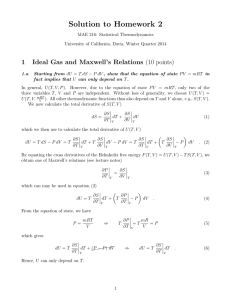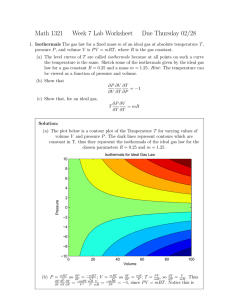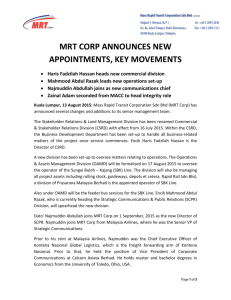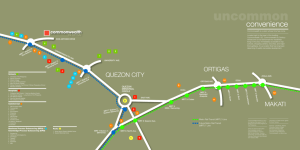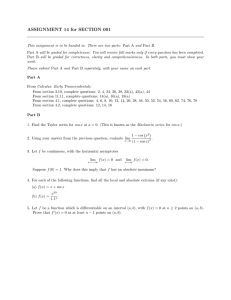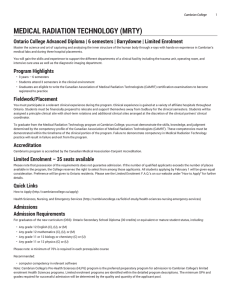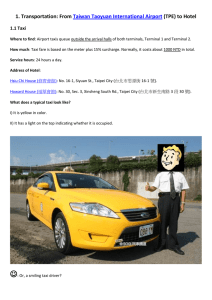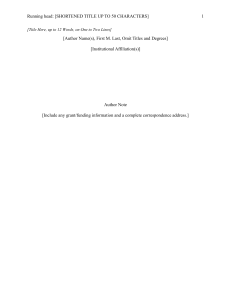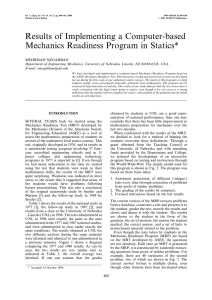Math 217: Assignment 3 selected solutions
advertisement
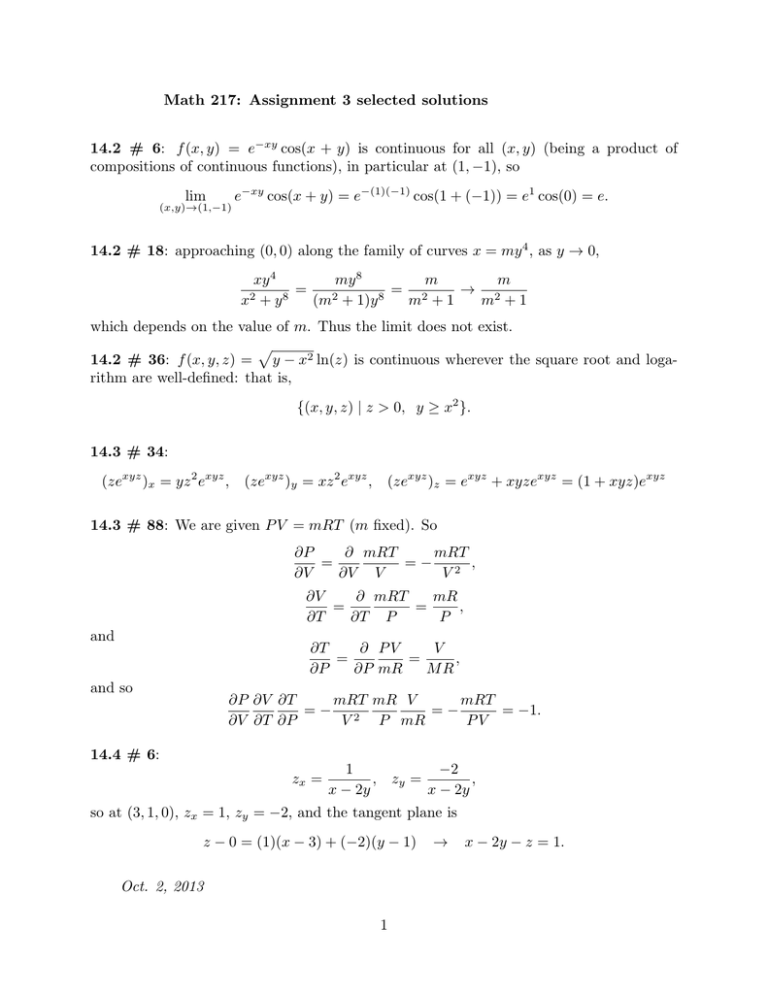
Math 217: Assignment 3 selected solutions
14.2 # 6: f (x, y) = e−xy cos(x + y) is continuous for all (x, y) (being a product of
compositions of continuous functions), in particular at (1, −1), so
e−xy cos(x + y) = e−(1)(−1) cos(1 + (−1)) = e1 cos(0) = e.
lim
(x,y)→(1,−1)
14.2 # 18: approaching (0, 0) along the family of curves x = my 4 , as y → 0,
my 8
m
m
xy 4
=
= 2
→ 2
2
8
2
8
x +y
(m + 1)y
m +1
m +1
which depends on the value of m. Thus the limit does not exist.
p
14.2 # 36: f (x, y, z) = y − x2 ln(z) is continuous wherever the square root and logarithm are well-defined: that is,
{(x, y, z) | z > 0, y ≥ x2 }.
14.3 # 34:
(zexyz )x = yz 2 exyz , (zexyz )y = xz 2 exyz , (zexyz )z = exyz + xyzexyz = (1 + xyz)exyz
14.3 # 88: We are given P V = mRT (m fixed). So
∂P
∂ mRT
mRT
=
=− 2 ,
∂V
∂V V
V
∂V
∂ mRT
mR
=
=
,
∂T
∂T P
P
and
∂T
∂ PV
V
=
=
,
∂P
∂P mR
MR
and so
∂P ∂V ∂T
mRT mR V
mRT
=− 2
=−
= −1.
∂V ∂T ∂P
V
P mR
PV
14.4 # 6:
zx =
1
,
x − 2y
zy =
−2
,
x − 2y
so at (3, 1, 0), zx = 1, zy = −2, and the tangent plane is
z − 0 = (1)(x − 3) + (−2)(y − 1)
Oct. 2, 2013
1
→
x − 2y − z = 1.

